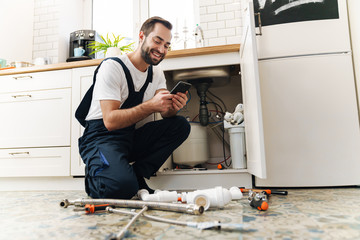Massage manipulates soft tissue — muscles, tendons, ligaments, and fascia (the connective tissue around organs). Practitioners use hand movements to rub or knead the body’s soft tissues.
A therapeutic massage lowers your heart rate and blood pressure while increasing serotonin levels, which help decrease stress hormones. This allows your body relax and improves sleep quality. Visit https://www.flowstate918.com/ to learn more.
Massage is an effective way to decrease tension and relax the entire body. It also stimulates the brain to release hormones that help decrease the stress that builds up in the soft tissues and muscles. The brain secretes endorphins, which are the body’s natural tranquilizer, and the body releases serotonin to help lower feelings of stress.
It also increases blood flow, which helps to bring oxygen and nutrients to the muscles while removing waste products. This enables the muscles to function more effectively and reduces pain and stiffness. The physical manipulation of the muscle tissue also helps break down knots and eases the pain associated with them.
Improves Sleep
Many people report that getting regular massages leads to better quality of sleep, and they are usually right! Massage triggers the parasympathetic nervous system, which helps regulate your circadian rhythm and lead to a restful night’s sleep. It also can help with sleep issues like anxiety or insomnia, which are often caused by chronic stress or an impending major event.
Increases Flexibility
The direct physical manipulation of the muscles and tendons during a relaxation massage allows the joints to move more easily. This can help reduce the tightness and stiffness that often develops in the joints due to a build-up of toxins. The lubricating effects of massage oil can help decrease friction between the bones, muscles and ligaments, making movement easier.
Boosts Immunity
Many studies have shown that massage can boost the immune system by lowering cortisol levels and increasing the production of immune-boosting cells. This is probably due to the fact that massage reduces stress and the body’s reaction to stress, thereby decreasing infection rates.
It is important to note that, although massage feels good, it is not a substitute for medical treatment. It is always wise to consult a doctor before seeking treatment for any condition, especially if you have a pre-existing condition or injury. In addition, it is a good idea to talk to your massage therapist about any special conditions you might have so that they can tailor the treatment to your needs.
Pain Relief
Massage helps relieve a variety of pain-related issues, including chronic back and neck problems, headaches, and even arthritis. It also improves circulation, which aids in the delivery of oxygen and nutrients to cells, tissues and organs, and the removal of waste products. In addition, it can reduce the buildup of toxins and help boost your immune system.
Research has shown that massage decreases the level of cortisol, a hormone responsible for stress. It can also increase serotonin levels, which promotes relaxation and sleep. The deep musculature of the spine can also be released through massage, and this can lead to improved alignment and balance in the body.
A variety of studies have shown that massage can be effective in treating a range of conditions, from back pain to constipation. The reason for this is that massage can help the nervous and endocrine systems regulate your metabolism, blood pressure, heart rate and inflammatory response, which all impact on pain.
In some cases, the relief provided by massage can be long-lasting. For this reason, some people choose to have regular massages, and this can reduce the overall amount of pain medication that is required.
However, it is important to note that massage techniques vary widely amongst practitioners and between trials. The lack of standardized techniques, reporting and measurement methods makes it difficult to compare results between studies, and this can impact on the ability to draw robust conclusions from the evidence base. In addition, many studies fail to address aspects of internal validity such as allocation concealment and intention-to-treat, limiting the potential for future replication and implementation.
It is also worth noting that massage can cause some individuals to feel a little lightheaded after the treatment, especially if the massage was intense or over a particular area. This is due to the fact that a good massage can increase blood flow to the skin, and this can lead to some temporary symptoms such as feeling slightly dizzy or faint. In such instances, it is recommended that you avoid any strenuous activities or exercise for an hour following your treatment.
Mood Enhancement
The rubbing and kneading of muscles during massage triggers the release of feel-good hormones known as endorphins, which act as natural pain killers and mood enhancers. The result is a natural sense of happiness and wellbeing, which can be sustained for some time after the treatment. Regular massage can help alleviate chronic pain conditions such as fibromyalgia, and studies have shown that it improves blood circulation, which helps deliver oxygen and nutrients to the tissues and organs, boosting overall physical health.
When your body and brain are flooded with stress-reducing chemicals like serotonin and dopamine, you are better able to manage difficult emotions and experiences. The mood enhancing effects of massage also reduce anxiety by naturally calming the fight-or-flight response. This is an important factor, as prolonged activation of this response can lead to negative effects on both physical and mental health.
Massage may also boost your immune system by increasing the number of white blood cells that kill bacteria, viruses and other harmful microorganisms. This is a great benefit because it means your body is better equipped to handle the toxins and germs you encounter every day.
One of the reasons people are often anxious is that they interpret certain everyday situations as life-threatening. When the adrenaline and norepinephrine hormones that cause your fight-or-flight response are continuously active, your body will begin to perceive everyday events such as being late for work or a disagreement with your partner as life-threatening. The calming effect of massage can reverse this and promote more positive feelings towards yourself and others.
The calming effects of massage can also increase self-confidence. As a form of caring touch, it can send the message that your body is worthy of care and love. This, in turn, can contribute to a better body image, which is an important aspect of emotional well-being. The holistic benefits of massage promote a strong mind-body connection that can be beneficial to those who struggle with depression, or have poor self-esteem and confidence. Massage may also encourage the acceptance of body-image changes in individuals with eating disorders or other psychological disorders.
Increased Flexibility
Massage increases flexibility by increasing tissue elasticity. Muscles with poor elasticity are more prone to injuries and restricted in their movement range. Massage improves elasticity by warming the muscles and stretching out muscle fibres to loosen them. In addition, massage breaks down adhesions and scar tissue that can restrict movement.
Injured muscles often develop adhesions, fibrous tissues that lay haphazardly across normal muscle fibres. Adhesions restrict movement and cause tightness, pain and fatigue. Massage breaks down adhesions and allows the muscle to move normally.
Athletes can benefit from massage to increase their flexibility by preventing injury and maximising performance. It has been shown that massage before exercise significantly improves the hamstring and quadriceps femoris flexibility of professional athletes. It is thought that the favourable effects are due to massage enhancing the circulation of blood to the muscle and increasing the temperature of the muscles which encourages them to stretch more readily.
The benefits of increased flexibility through massage can help reduce stiffness and enhance the overall quality of life for the client as they may be able to take part in activities that were previously impossible due to the restrictions in their joint movement. In addition, clients have reported that they are able to resume sporting activity and even get back into work after a period of time off due to injury.
Tight muscles retain waste products and toxins, such as lactic acid, which produce tightness, fatigue and pain. These waste products and toxins decrease muscle flexibility. Massage stimulates the lymphatic system which is responsible for naturally flushing these toxins out of the body.
Massage also increases the flexibility of tight muscles by decreasing pain. Massage increases blood flow to the affected area, loosens the tight muscles and releases endorphins, a hormone-like substance that acts as the body’s natural pain killer. By reducing pain, flexibility is restored and the muscle is able to relax and lengthen. Massage has a profound effect on both the deeper and the more superficial layers of muscles, tendons and ligaments. This is especially the case with deeper musculature such as the deep spinal musculature.



